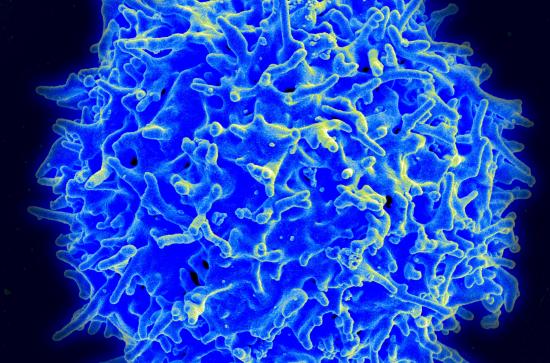
Researchers from Maynooth University and the Walter and Eliza Hall Institute in Australia have made a significant breakthrough in understanding how immune systems respond to infection and disease.
Professor Ken Duffy, an applied mathematician at Maynooth University, in collaboration with Professor Philip Hodgkin’s biomedical research team at the Walter and Eliza Hall Institute of Medical Research, have defined for the first time how the size of the immune response is controlled, using mathematical models to predict how powerfully immune cells respond to infection and disease.
Their findings, published today in the journal Science, have implications for our understanding of how both harmful and beneficial immune responses can be manipulated to improve health.
The research team combined laboratory data with statistical, mathematical and computer modeling to determine how different external signals impact on T cell proliferation.
According to Professor Duffy, “Our research offers significant insight into how immune responses might be manipulated to improve health. Innovative new therapies that harness the immune system to attack cancerous cells show exciting potential for treating certain cancers, and our research should provide greater precision in understanding how these anti-cancer immune responses could be developed further to improve treatments.”
“When mounting a defense against infection, T cells divide, creating an army to fight the unwanted intruder. If T cells are responding to a vaccine, for example, greater division can result in a more aggressive and protective immune response. As a result of our research we are able to predict the size of an immune system’s response upon coming under attack from a flu virus, for example, based on the sum of certain indicators received by the flu-responsive T cells.”
T cells are important for launching specific immune responses against invading microbes, as well as eliminating some cancer cells. Errors in the control of T cells can lead to harmful ‘autoimmune’ responses that attack the body’s own tissues, the underlying cause of diseases including Type 1 Diabetes and Rheumatoid Arthritis.
Professor Phil Hodgkin from the Walter and Eliza Hall Institute said the research also displayed how ‘errors’ in the developing immune response contribute to autoimmune disease. “Many of these diseases are not caused by a single change in our body, but by complex, very subtle changes in many factors affecting T cells. In the case of harmful T cells responses against our own body tissues, this model clarifies that many small changes in the signals delivered to T cells can have a cumulative effect, enough to trigger a harmful immune response.
“In the long run this may enhance efforts to predict a person’s risk of autoimmune disease, and improve how these conditions are treated,” Professor Hodgkin said.
Prof Hodgkin‘s research team at the Walter and Eliza Hall Institute was jointly led by Dr. Susanne Heinzel, alongside Ms Julia Marchingo and Dr. Andrey Kan.
The research was supported by Science Foundation Ireland, the Australian National Health and Medical Research Council, the Human Frontier Science Program, the Australian Research Council, the Australian Postgraduate Award scheme, the Edith Moffatt Scholarship Fund, and the Victorian Government.
Photograph: Health human T cell, NIAID
